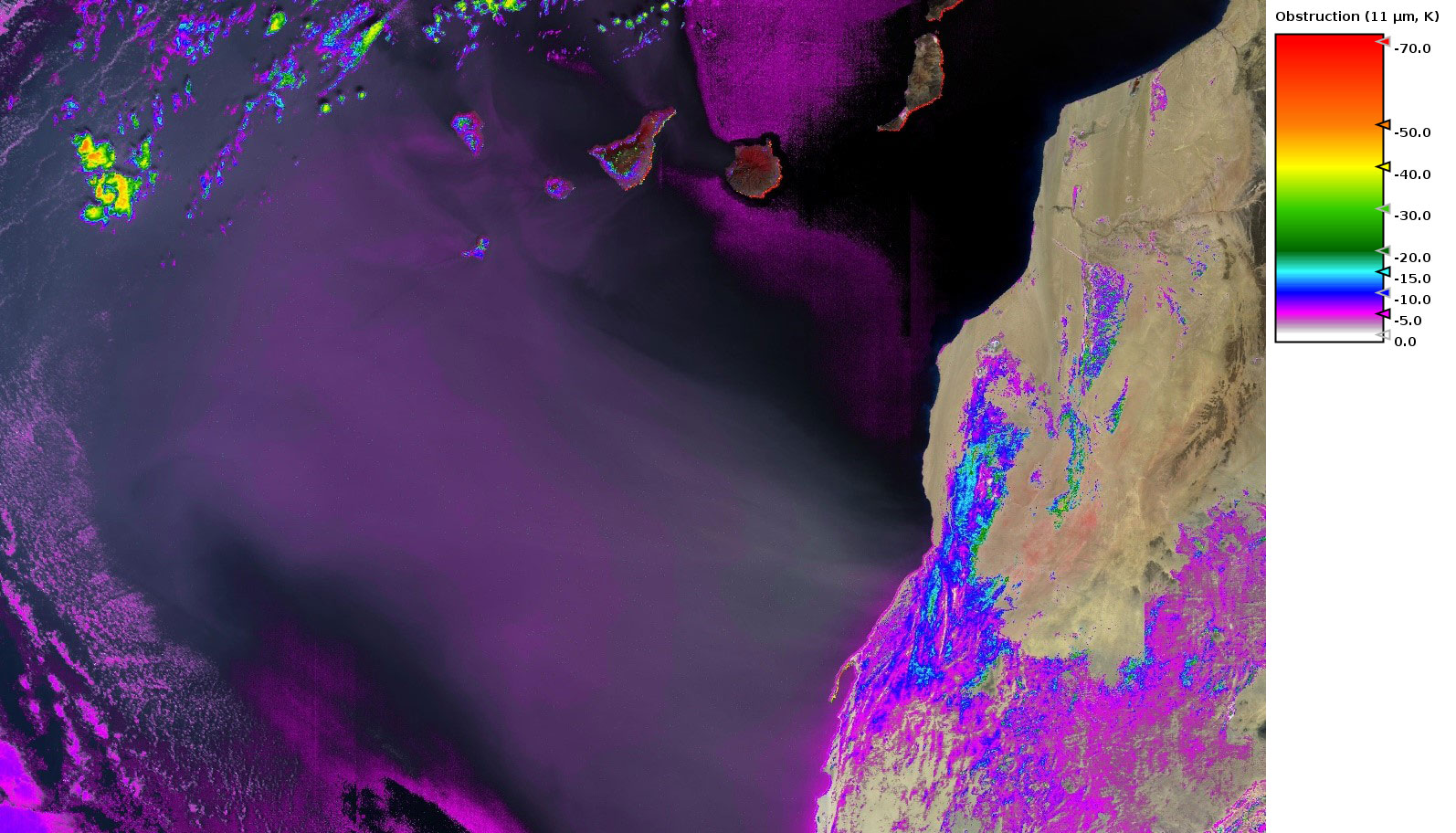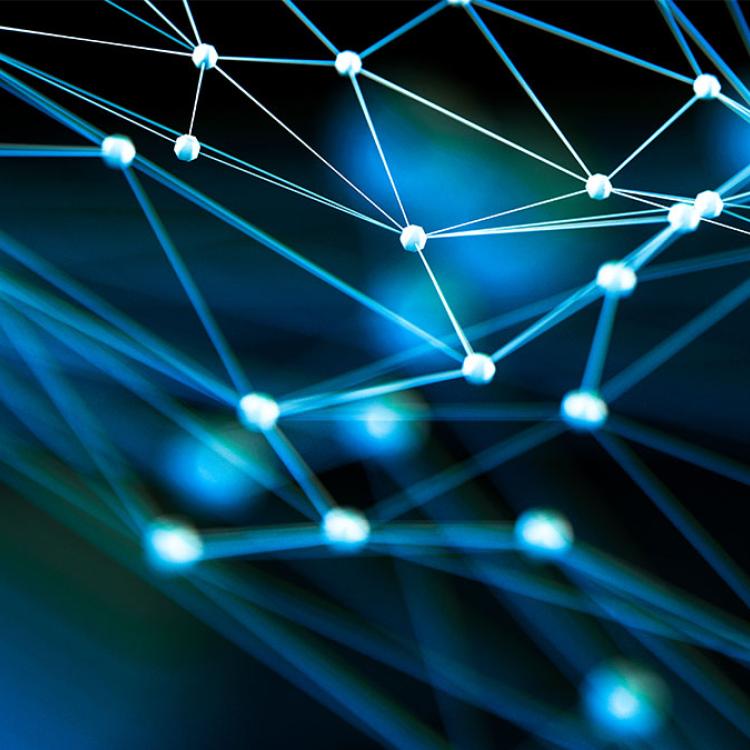16 February 2023
12 February 2021
EUMETSAT is responsible for delivering best quality operational geo-bio-physical parameters to its international users, and to the Copernicus services, in support of a variety of applications (atmospheric, climate and marine). In particular, EUMETSAT is entrusted by the European Commission (EC), and its member states, to provide operational ocean colour, sea (ice) surface temperature and Near Real Time (NRT) atmospheric composition and meteorology products (e.g. water vapour content, aerosols, fires, clouds, and atmospheric motion vectors) from the Copernicus Sentinel-3 satellites. The quality of these data, and its usability in further processing, critically depends on the screening of the top of atmosphere signal for conditions unsuitable for processing. Optical obstruction of the target of interest can be due to clouds, aerosols, or a more or less, complex mixture of both, and the level of obstruction depends on concentration and type of aerosol and clouds.
The following figures demonstrate a critical cloud masking issue identified using the SLSTR-A basic cloud mask product on 5 February 2019. The RGB image (Figure 1) shows the presence of clouds and Sahara dust. The basic cloud mask overlay (light green, Figure 2) cannot discriminate between the different types of obstruction, flags a large part of the dust outbreak over ocean as cloudy, and also leaves a considerable part unflagged. Consequently, the flagged part of the dust is missing in the downstream L2 NRT AOD product, while the unflagged part of the dust contaminates ocean colour retrieval. The Bayesian cloud mask (dark green, Figure 3) flags all dust over ocean as cloudy, which is suitable for SST retrieval.
Objectives
The main objective of the study was to specify a novel algorithm (and develop the prototype software) for generating an atmospheric mask from Sentinel-3, which can quantify how much the observed atmosphere deviates from the (assumed) clear-sky atmosphere. The study terms this deviation ‘obstruction’. The algorithm expresses obstruction in (absolute or relative) units of the fundamental measured quantity: either top-of-atmosphere reflectance or brightness temperature, depending on the waveband measured. This obstruction, calculated based on exploitation of the spectral synergy of OLCI and SLSTR complementary wavebands, shall be able to efficiently guide a broad range of Level 2 users and applications of Sentinel-3 observations from the Ocean and Land Colour Instrument (OLCI) and the Sea and Land Surface Temperature Radiometer (SLSTR). Quantitative obstruction is complemented by qualitative masks, which shall identify and characterise the nature of obstruction (clouds, aerosols or a mixture). Results obtained for the cases illustrated in Figures 1-3 are depicted in Figures 4-6 below.
Relative obstruction in the SLSTR 554nm waveband (Figure 4) is sensitive to both clouds and aerosols and quantifies the relative contribution of (cloud-effective) obstruction to the reflectance measured by the satellite. For instance, a relative obstruction of 0.5 states that half of the measured reflectance is due to clouds and/or aerosol. Here, relative obstruction is higher over ocean than over desert (for the supposed same amount of dust or cloud), because desert surface is brighter than ocean surface.
Obstruction in the SLSTR 11µm waveband (Figure 5) is sensitive to both clouds and aerosol, too, and quantifies the deviation of the measured brightness temperature from an assumed clear-sky measurement. Here, most of the dust aerosol is less obstructive than clouds because the dust is warmer.
Qualitative obstruction masks (Figure 6) discriminate between clouds and aerosol. Thicker layers of aerosol are marked by the orange overlay. Thinner layers are marked by the yellow overlay. The red overlay marks mixtures of aerosol and clouds. Pure clouds are not marked in the example above, but the algorithm can discern clouds of different optical thickness.
Overview
The study consisted of two phases:
- Phase 1 was intended to choose/specify the approach for the synergy Sentinel-3 atmospheric mask. The choice was based on a thorough review of the cloud masking achievements by European and international scientists working with medium spectral resolution imagery sensors; the performance of the currently existing cloud masks from stand-alone OLCI and SLSTR sensors, and the needs of Sentinel-3 users for Level 2 land, marine and atmosphere applications.
- Phase 2 was intended to consolidate the concept of the proposed synergy Sentinel-3 atmospheric mask and validated it on a statistically representative dataset (Figure 7). The prototype was delivered to EUMETSAT at the end of the study and successfully run in the in-house offline environment.
The concept proposed for the Sentinel-3 synergy atmospheric mask relies, not only, on the detection of atmospheric obstruction (and, when possible, the distinction of clouds and aerosols), but also on characterisation of the degree of obstruction. This degree of obstruction is estimated by simulating the Top Of the Atmosphere (TOA) radiance perturbation caused by the obstruction in a series of key OLCI/SLSTR channels. The perturbation is estimated based on retrieved physical quantities, such as Cloud Optical Thickness (COT) and Aerosol Optical Depth (AOD). The final product, containing both qualitative and quantitative obstruction information, was designed to guide users with very diverse needs, spanning from clear-sky conservative applications with the need to remove any atmospheric obstruction, to more permissive applications, where the degree of obstruction can be tuned using thresholds based on the TOA perturbation metrics.
Before activating Phase 2, a group of six independent experts was invited to review the approach developed in Phase 1, identify potential weaknesses to be improved during Phase 2, and assess whether it would overcome the limitations of currently available OLCI and SLSTR single-sensor cloud masks. The overall outcome of the expert workshop was positive: it highlighted the benefits of the Sentinel-3 synergy atmospheric mask and provided important recommendations to implement during Phase 2 (Summary of outcome of the S3-SYN-CM Expert Meeting).
During the course of this study, the project team at Brockmann actively communicated with experts at EUMETSAT, within the Remote Sensing and Products (RSP) Division, and with external experts (eg S3 Validation Team and Quality Working Groups). This continuous interaction allowed the integration of the most recent developments from the community into the study, in terms of sensor and algorithm developments.
The study was successfully concluded in January 2022.










